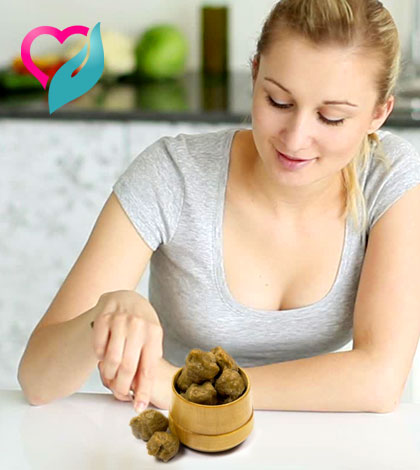Asafoetida gets its name from the Persian aza, for resin and the Latin foetidus for stinking. The herb originated in eastern Iran and western Afghanistan. It is chiefly cultivated in Afghanistan, Iran, and high-altitude areas of India and Pakistan.
[wp_ad_camp_1]
It is available in powder and tincture form or as lumps of wax-like texture. It tends to lose its pungent odor when lightly fried in hot oil. It is the dried latex exuded from the living rootstock of ferula species plant. Though characterized by an unpleasant odor, it has numerous health benefits. It has interesting names around the world like Devil’s Dung, Food of the Gods, Stinking Gum, Giant Fennel, Yang, Kama-i-anguza, Hingu, Heeng, etc.
It is known to possess anti flatulent, antiepileptic, antimicrobial, anti inflammatory, antispasmodic, anthelminthic, laxative, nerve stimulant and expectorant properties. It is also known to ease anxiety due to its sedative qualities. It works as a local stimulant of mucous membranes, particularly in the alimentary tract. Hence, asafoetida benefits in the natural treatment of colic. Besides, its anticoagulant quality helps lower blood pressure.
[wp_ad_camp_4]
Certain scientific studies have shown that the healing properties of this spice tend to protect against high triglycerides and cholesterol caused by high fat consumption. However, it is better to avoid intake of asafoetida when taking blood pressure control medications.
Uses
- Taking a mixture of a quarter teaspoon of dry ginger powder, a pinch of asafoetida and black salt in a cup of warm water helps reduce flatulence.
- Having a pinch of asafoetida mixed in a cup of buttermilk serves as a great natural home remedy for bloating and gas problems. If you do not have buttermilk, simply use lukewarm water.
- Prepare a powder of a mixture consisting of one tablespoon each of dried ginger, long pepper, curry leaves, Bishop’s weed (ajwain), black pepper and cumin. Fry this mixture in a teaspoon of sesame oil along with one teaspoon of asafoetida. Finally, add some rock salt in it. Take one teaspoon of this natural medicine (mixed with clarified butter) along with steamed rice to cure indigestion.
[wp_ad_camp_2]
- Smelling asafoetida gum is highly beneficial in dealing with hysteria.
- Take one teaspoon each of asafoetida, dried ginger, camphor and two teaspoons of tailed pepper (cubeb). Add some milk in it, enough to form a paste. Apply this therapeutic paste on your forehead to heal tension and migraine headaches.
- Fry about 6 centigrams of asafoetida in clarified butter, mix a teaspoon of fresh latex of banyan tree and some honey in it. Taking this home medicine daily before sunrise is believed to cure issues like premature ejaculation and spermatorrhea. It also improves libido and female sterility.
- Add a quarter teaspoon of asafoetida and half a teaspoon each of onion juice and betel leaf juice in two teaspoons of honey. Take this asafoetida home remedy three times in a day to deal with symptoms of asthma and other respiratory disorders.
- Mix half a teaspoon of asafoetida powder in two teaspoons of lime juice. Heat the solution slightly. Finally, dip a cotton ball in this solution and place it on your aching tooth to relieve toothache.
- Applying this herb directly on skin serves as one of the easiest home remedies for corns and calluses.
It reduces dysmenorrhea or painful menstruation. For this, you need to consume a cup of buttermilk mixed with a pinch of asafoetida, half a teaspoon of fenugreek powder and little salt.
Apart from these medicinal uses, asafetida is used in pickles to aid in digestion. The entire plant can also be used as a vegetable. Moreover, it is a crucial ingredient in Worcestershire sauce.
Precautions
Asafoetida can cause nausea and vomiting in some individuals. In addition, excessive intake of this herb can give rise to throat irritation, burping, swollen lips, stomach gas and diarrhea.
It may also have adverse effects on individuals suffering from some central nervous system condition. In addition, asafoetida can irritate the digestive tract when taken during gastrointestinal infection.
[wp_ad_camp_3]
Image courtesy: pond5.com , buddhaglobal.com






















